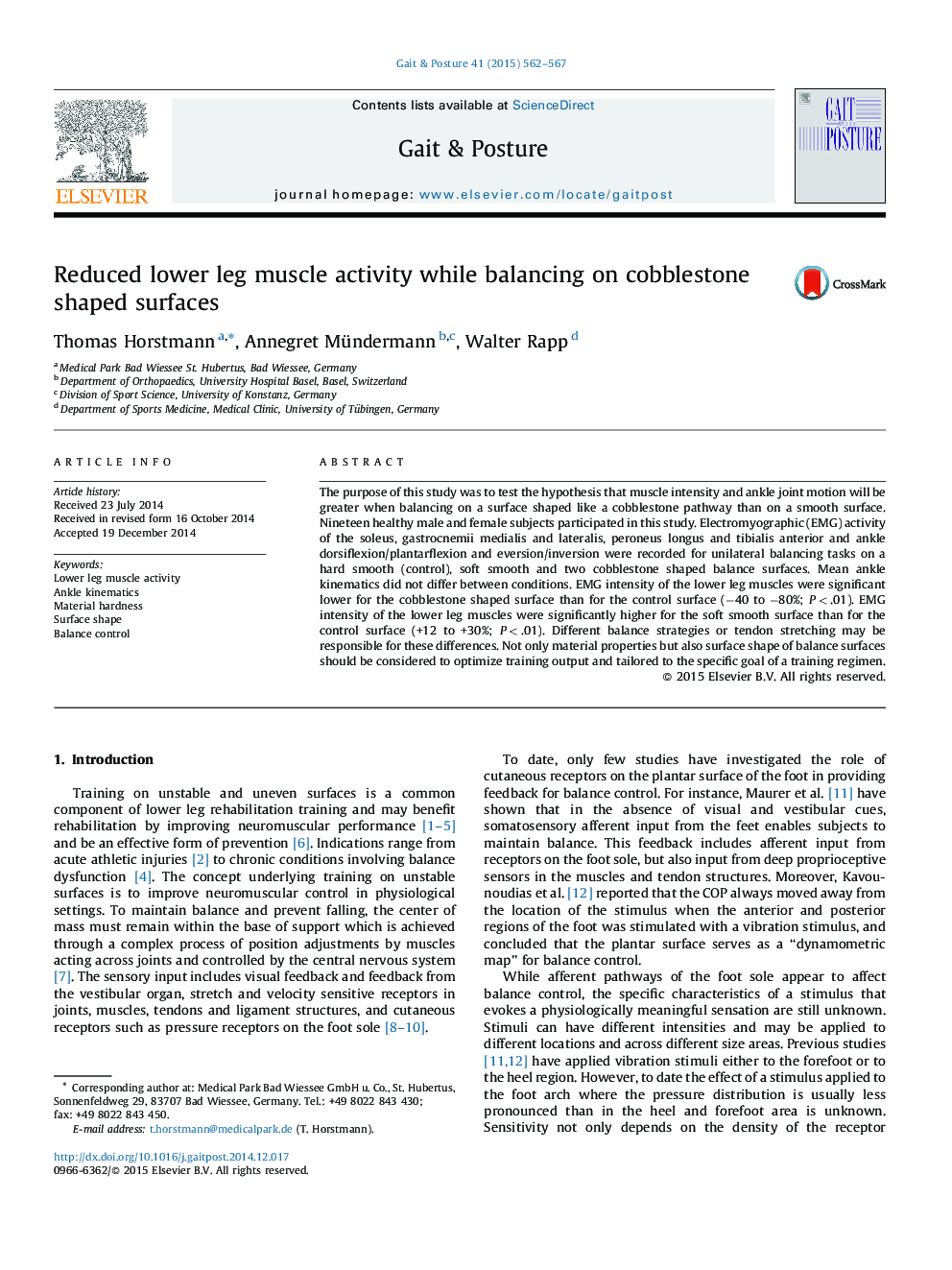| Article ID | Journal | Published Year | Pages | File Type |
|---|---|---|---|---|
| 6206146 | Gait & Posture | 2015 | 6 Pages |
â¢We compare balance tasks on surfaces with different hardness and surface shape.â¢We measure lower leg muscle activity and ankle kinematics.â¢Cobblestone shaped surfaces reduce lower leg muscle activity.â¢Soft surfaces increase lower leg muscle activity.
The purpose of this study was to test the hypothesis that muscle intensity and ankle joint motion will be greater when balancing on a surface shaped like a cobblestone pathway than on a smooth surface. Nineteen healthy male and female subjects participated in this study. Electromyographic (EMG) activity of the soleus, gastrocnemii medialis and lateralis, peroneus longus and tibialis anterior and ankle dorsiflexion/plantarflexion and eversion/inversion were recorded for unilateral balancing tasks on a hard smooth (control), soft smooth and two cobblestone shaped balance surfaces. Mean ankle kinematics did not differ between conditions. EMG intensity of the lower leg muscles were significant lower for the cobblestone shaped surface than for the control surface (â40 to â80%; PÂ <Â .01). EMG intensity of the lower leg muscles were significantly higher for the soft smooth surface than for the control surface (+12 to +30%; PÂ <Â .01). Different balance strategies or tendon stretching may be responsible for these differences. Not only material properties but also surface shape of balance surfaces should be considered to optimize training output and tailored to the specific goal of a training regimen.
